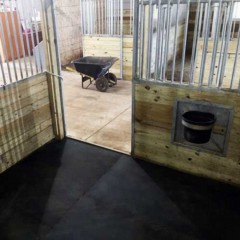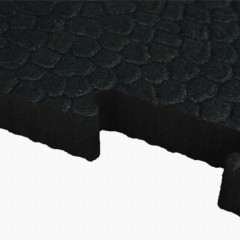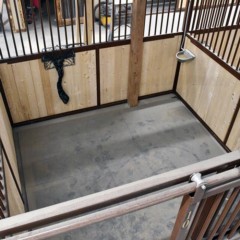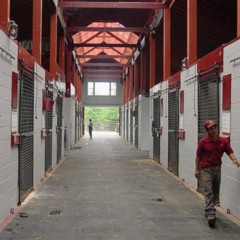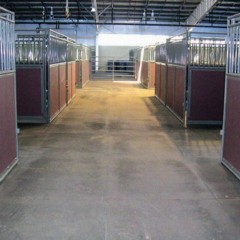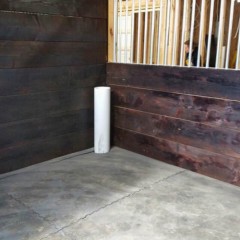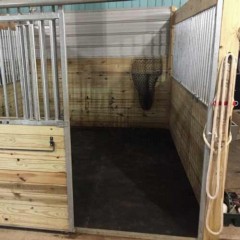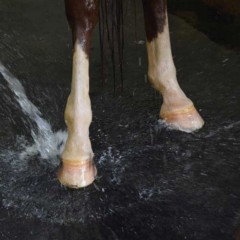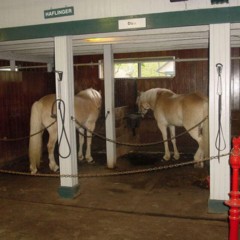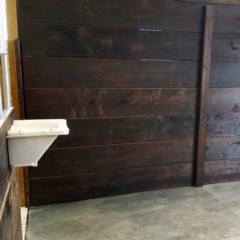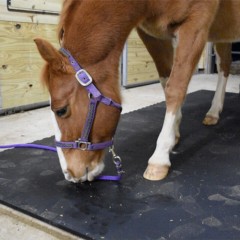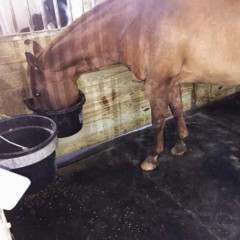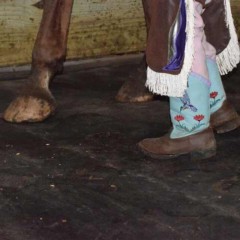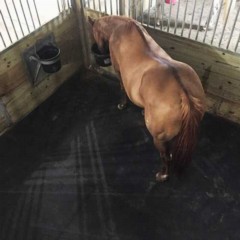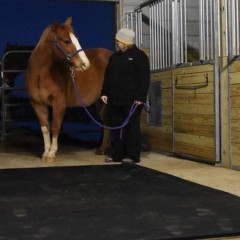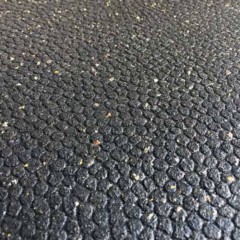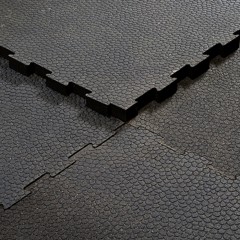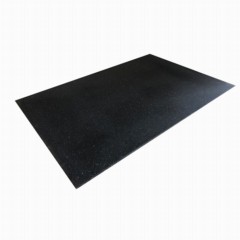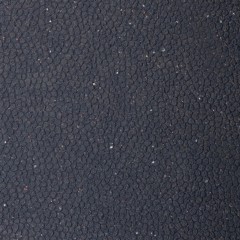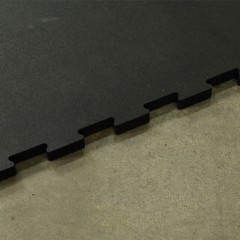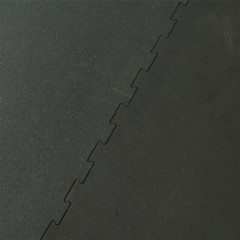Options for Humane Rubber Flooring
When you want to install rubber floors to support significant amounts of weight, you need thick, well-built mats. Whether you are creating a safe space for a cow or horse in a barn or stable on the farm, or you need heavy-duty tiles to support weightlifting equipment, Humane rubber flooring from Greatmats is the best choice.
These mats feature made-in-America construction, meaning you can trust the quality of the materials and the accuracy of the dimensions. Thinner and less expensive rubber mats are cheaper for a reason. Count on the quality of Humane mats when you want flooring products that deliver what they promise over multiple decades.
Types and Options for Humane Flooring
You can take advantage of several different types and designs of Humane flooring.
Straight Edge
Our straight edge mats often measure 4x6 feet. You can use them alone to cover a small area, or you can slide them tightly against each other to create a larger layout. As long as the subfloor is sturdy and flat, the edges of these mats should not curl or pop out of place.
Interlocking
Interlocking Humane rubber mats use a puzzle-style edge to connect multiple mats for covering a larger area. Because of the precise manufacturing tolerances used to create them, the edges should fit tightly without needing adhesive.
Single Mats or Pre-Sized Kits
At Greatmats, you can purchase single mats or pre-sized kits. Our kits contain all the pieces needed to cover areas like 8x12, 10x10, or 10x20 feet. We have more than a dozen kits to match the exact size you may have in a stall. Single mats let you create your own coverage size or cover a stall that has an unusual shape.
Cobblestone
Humane mats with a cobblestone texture on the top provide a little extra traction when the rubber surface is wet. This texture is a key anti-slip feature for these mats.
Button Top or Wash Bay
Our wash bay Humane mats have a raised button-top texture that greatly reduces the chance of slipping when working in an area that’s constantly wet and may have some soapy residue on the surface.
Smooth Top
Smooth top rubber mats are the easiest to clean with a broom because they don’t have any texture that could retain small particles. If you’re using them in areas that are primarily dry, smooth top mats offer plenty of traction because rubber is a naturally grippy material.
Benefits of Using Humane Rubber Flooring
Some of the key benefits of using our Humane rubber flooring products include:
- Manufactured to the highest measurement tolerances
- Contains high-quality materials
- Mats are manufactured in the United States
- Supports large amounts of weight without buckling
- Designed with closed-cell materials to not absorb water
- Anti-bacterial and anti-fungal designs
- Insulates against a cold subfloor
- Protects against a damp subfloor
- Resists curling at the edges
- Made for a DIY installation
- No need to use glue during installation
- Textured surfaces generate significant anti-slip properties
- Smooth surface designs are easier to clean
Use Types for Humane Mats
You can successfully use our Humane rubber flooring mats in a variety of locations, including:
- Horse stalls
- Goat stalls
- Sheep stalls
- Alpaca and llama stalls
- Dog rescues
- Barns for cattle
- Livestock barns
- Fitness centers
- Weightlifting areas
- Home gyms with free weights
Humane Rubber Flooring Q&A
How do Humane rubber fitness flooring and stall mats differ?
Humane rubber fitness flooring is a better option when you’re trying to reduce noise and vibration in the fitness center. Humane rubber stall mats have a thicker design that’s better for protecting the subfloor when you’re using heavy weightlifting equipment.
How to choose the best rubber stable mats for horses?
To
choose the best rubber stable mats for horses, pay attention to the thickness of the material. Thick rubber supports the weight of the horse and prevents the animal from pawing the mats out of place. They need to be easy to clean while offering anti-slip traction when they’re wet.
How long do horse stall mats last?
The
lifespan of horse stall mats depends on the quality of the materials. When you stick with a well-known manufacturer and supplier like Greatmats, you avoid weak spots or inaccurate thickness measurements. Most mats offer warranties of at least 10 years. Some offer limited lifetime warranties. Generally, thicker mats will last longer than thinner mats.
1 reviews
$32376 /Kit You Save 20%$4.55/sqftShop $31160 /Kit You Save 19%$3.45/sqftShips Out in 3-5 Working Days SustainableShop$37240 /Kit You Save 20%$3.19/sqftShips Out in 3-5 Working Days SustainableShop$74480 /Kit You Save 20%$3.83/sqftShop$44688 /Kit You Save 20%$3.19/sqftShips Out in 3-5 Working Days SustainableShop$59584 /Kit You Save 19%$3.65/sqftShop$59584 /Kit You Save 19%$3.19/sqftShop$67032 /Kit You Save 19%$3.19/sqftShop$74480 /Kit You Save 20%$3.20/sqftShop$89376 /Kit You Save 20%$3.19/sqftShop$74480 /Kit You Save 20%$3.94/sqftShop$74480 /Kit You Save 20%$3.43/sqftShop$1,11720 /Kit You Save 19%$4.12/sqftShop$1,02144 /Kit You Save 19%$4.05/sqftShop$4864 /Mat You Save 19%$2.06/sqftShop$41344 /Kit You Save 19%$4.58/sqftShop$49400 /Kit You Save 20%$4.23/sqftShop
$31160 /Kit You Save 19%$3.45/sqftShips Out in 3-5 Working Days SustainableShop$37240 /Kit You Save 20%$3.19/sqftShips Out in 3-5 Working Days SustainableShop$74480 /Kit You Save 20%$3.83/sqftShop$44688 /Kit You Save 20%$3.19/sqftShips Out in 3-5 Working Days SustainableShop$59584 /Kit You Save 19%$3.65/sqftShop$59584 /Kit You Save 19%$3.19/sqftShop$67032 /Kit You Save 19%$3.19/sqftShop$74480 /Kit You Save 20%$3.20/sqftShop$89376 /Kit You Save 20%$3.19/sqftShop$74480 /Kit You Save 20%$3.94/sqftShop$74480 /Kit You Save 20%$3.43/sqftShop$1,11720 /Kit You Save 19%$4.12/sqftShop$1,02144 /Kit You Save 19%$4.05/sqftShop$4864 /Mat You Save 19%$2.06/sqftShop$41344 /Kit You Save 19%$4.58/sqftShop$49400 /Kit You Save 20%$4.23/sqftShop